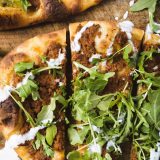The first indication that Tel Aviv—despite its famed Jaffa port district, a major biblical destination—is more about the future than the past came when I stopped by the hummus shop Shlomo & Doron, expecting a bowl of warm whipped chickpeas with little else. Instead, I received a tasting of six bowls, each with a signature flavor: from Mexican hummus (with beans, tortilla chips and jalapeños) and shakshuka hummus to variations with falafel and pickled cabbage. And spending a couple hours at a sidewalk café late at night tells the same tale: electric scooters, yoga clothes and a pulsing stream of foot traffic—everyone living for the moment.
Shaffa Bar, located in a giant flea market in Jaffa—gave me a culinary tour of her menu and Tel Aviv’s changing foodways with a broad sampling of updated classics, such as pureed fava beans. Here, Petel uses lima beans instead (not as dry) mixed with olive oil, tomato, chili and fresh oregano. Lighter and better. Cabbage grilled for two hours and served with a Greek skordalia sauce. Tabbouleh. Siniya, a classic local dish of beef and lamb, but Petel updates it with grilled vegetables including onions, cauliflower and tomatoes. And, of course, chopped liver and her own homemade lox. But she also offered lahmajoun, the local take on pizza—flatbread topped with a beef/lamb mixture. She made it her own with a sprinkling of local greens that looked like cress, drizzled with yogurt.
Lahmajoun (dough with meat), like many dishes in the Middle East, has a complicated origin story. The original recipe probably was made with lavash and has Armenian roots. Today, lahmajoun (though it has many spellings, including lahmacun and lahmadjun) also is popular in Turkey, Syria and Lebanon, as well as Israel. But in essence, it’s ground spiced meat on flatbread (cumin and cinnamon are typical spices) and it has been around for millennia. (Flatbreads were baked without toppings until the invention of the stone oven in the Middle Ages, when toppings and stuffings were baked with the bread, not added later.) It also can be served wrapped around vegetables, and sometimes the topping includes minced vegetables as well as meat.
Here at Milk Street, we started with our go-to flatbread recipe, which calls for ¾ cup yogurt, making the dough tender and easier to stretch. The dough is made in a food processor, shaped into balls, then allowed to rise for 90 minutes or until doubled. The spiced meat topping—also mixed in the processor—includes tomato paste, smoked paprika, cumin and red pepper flakes, plus onion and roasted red peppers. The raw meat mixture is spread onto the dough once shaped and baked just like pizza in a hot oven. Topped with arugula and drizzled with thinned yogurt, it’s something old and something new.
Before Baking the Flatbread
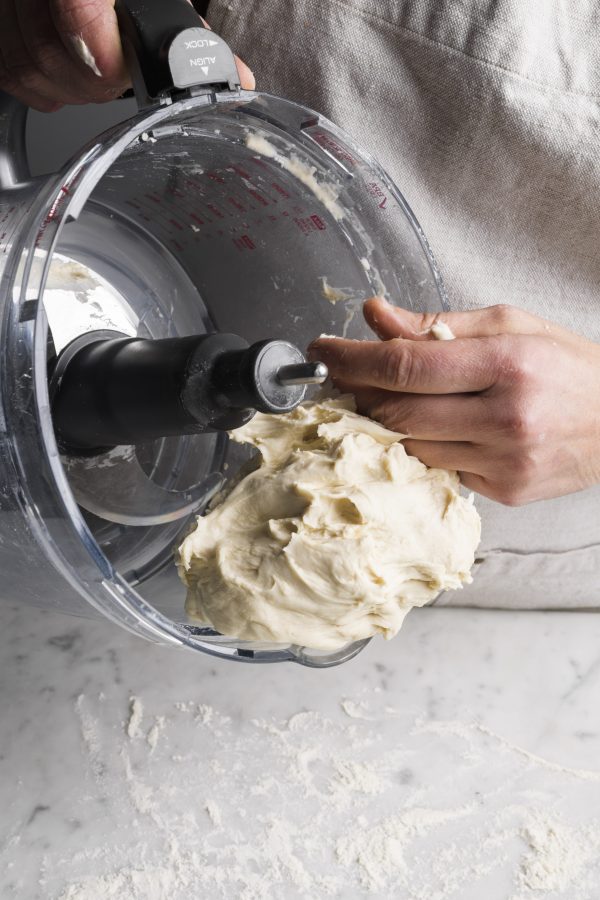
1. Process the dough until shiny and elastic. Transfer to a lightly floured counter and divide the dough in half.
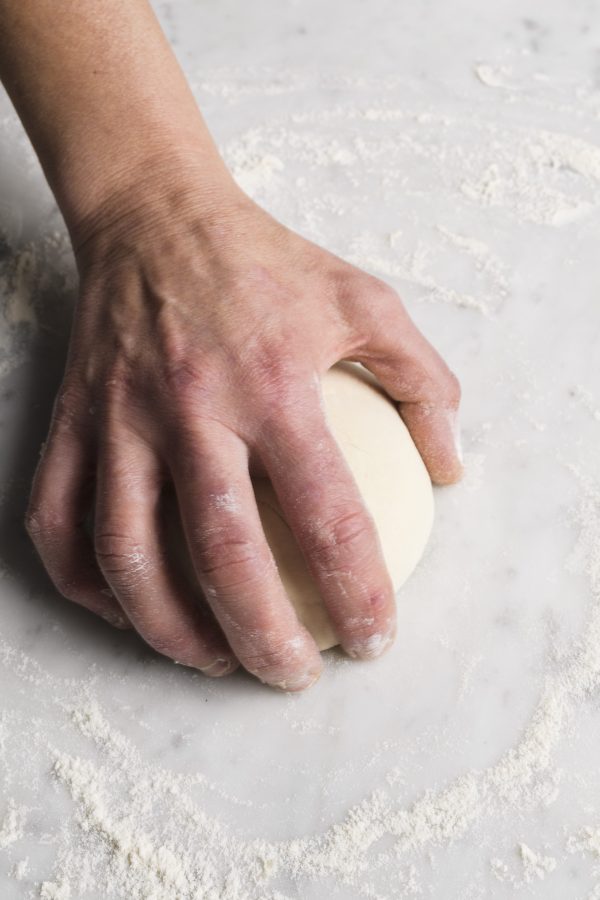
2. Form each half into a taut ball by rolling it in a circular motion under a cupped hand. Let the balls rise until doubled.
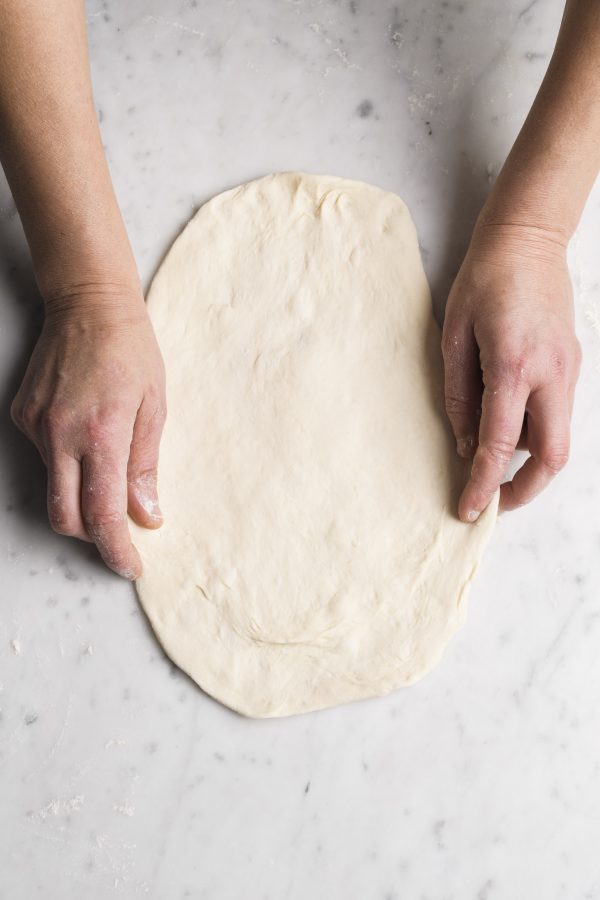
3. Gently stretch each dough ball on a lightly floured counter into an oval roughly 6 inches wide and 12 inches long.
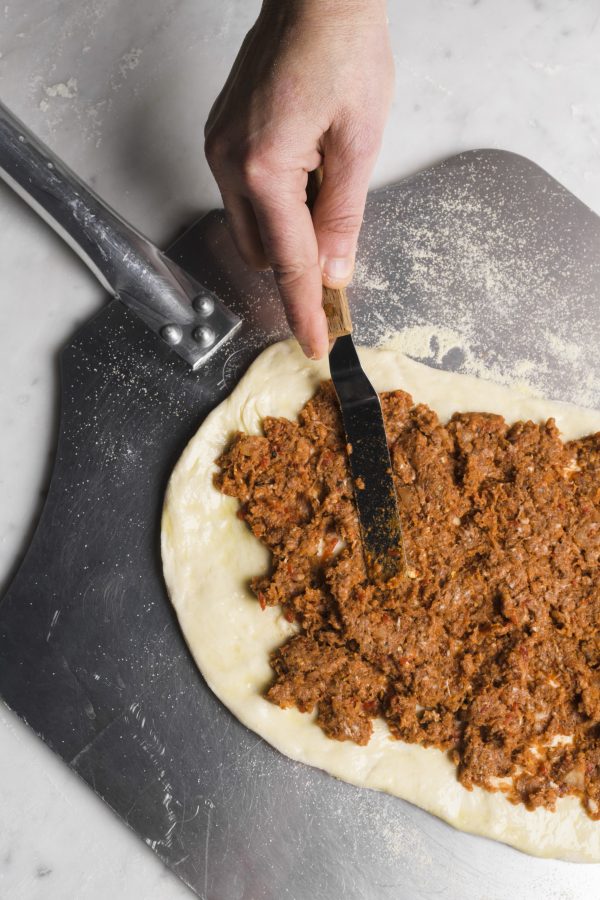
4. Transfer one shaped dough to a baking peel. Brush the dough with oil, then spread half the meat mixture on the dough.
To make these flatbreads, we first mix the dough in a food processor. We then divide the dough, shape it, let it rise and stretch it out before baking.
